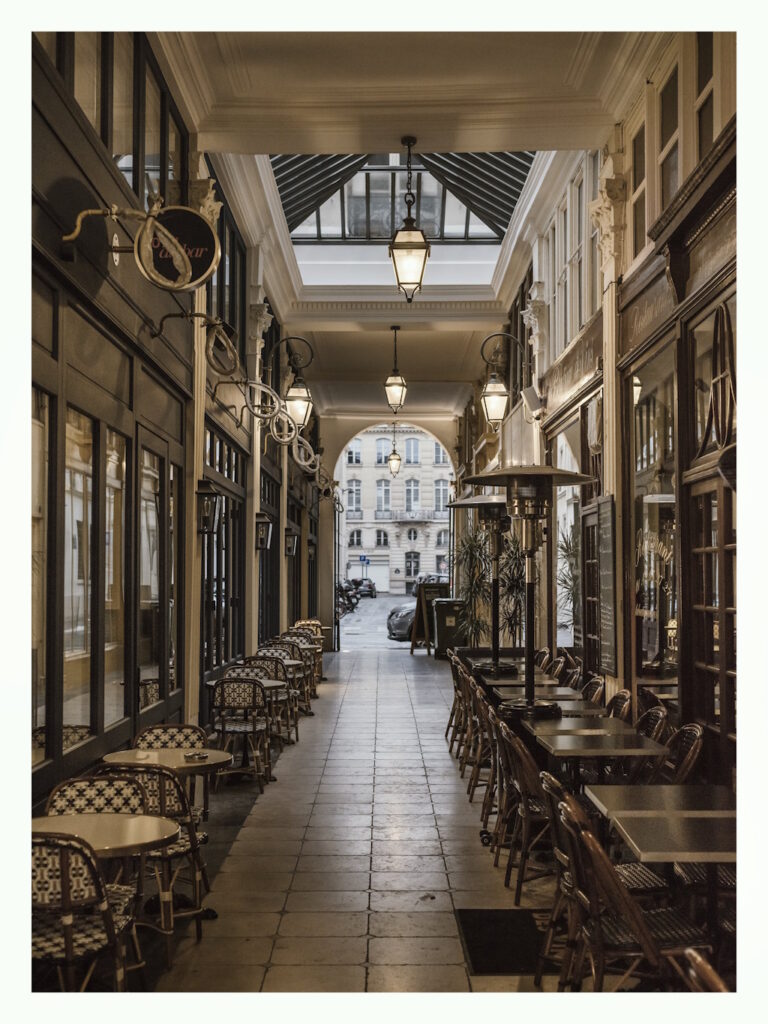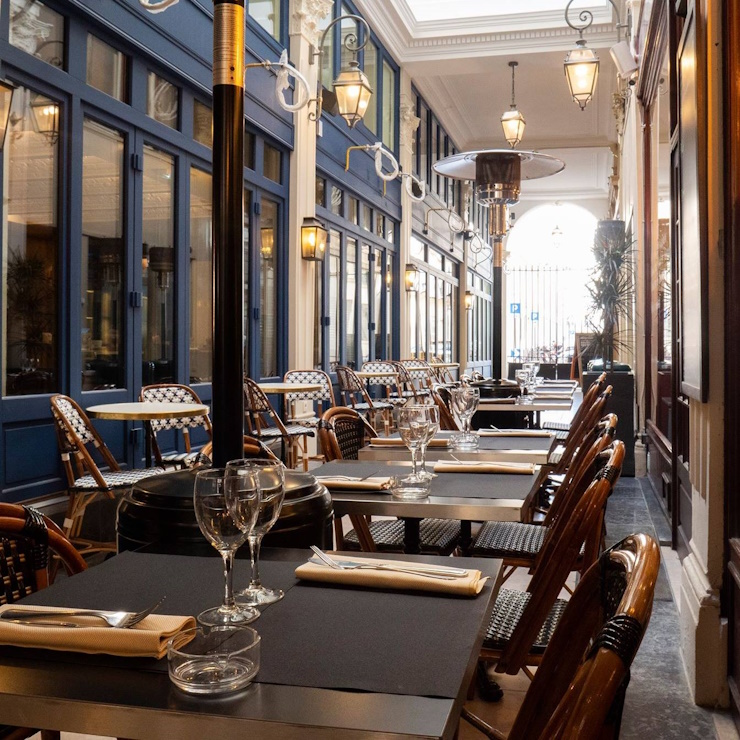Passage Puteaux – Paris’s Best-Kept Secret
Passage Puteaux is one of Paris’s hidden gems. Just steps away from Boulevard de la Madeleine in the 8th arrondissement, it’s a short covered passage, only 29 meters long, but it’s packed with charm.

Though not as famous as some of the city’s other covered walkways, it has a quiet elegance. With just six sections marked by pilasters, the passage has glass-paneled fronts and a partially covered glass roof.
The pilasters are topped with delicately crafted capitals featuring elegant decorative motifs.
The gallery is home to the terraces of the wine bistro-bar “La Boutique des Vins” and the bar of a boutique hotel, Le Royal Madeleine.

The passage opened in 1839 and was the creation of Louis Puteaux, a Parisian real estate developer active in the Batignolles area with housing projects and luxury developments.
Around this time, the neighborhood near the Madeleine was growing quickly, fueled by rumors of a major train station being built nearby.
The railway from Paris to Saint-Germain was transforming the city’s infrastructure, and developers were eager to invest.
Puteaux saw the potential and built this passage as part of a larger real estate project on land once occupied by a Benedictine priory.
However, plans for the station didn’t go as expected. Local residents opposed the railway terminal in their upscale neighborhood, and the project shifted elsewhere.
Gare Saint-Lazare eventually became one of Paris’s key transportation hubs but was constructed further away. It started with a temporary wooden station in 1837 before finding its final location by the 1850s.
As a result, instead of being near the busy station, Passage Puteaux was left without the foot traffic it had been designed to attract.
Even without the train station, however, the Passage Puteaux survived the test of time. It was briefly renamed Passage Pasquier in 1873, but its original name was restored soon after.
Today, the passage remains a peaceful place, home to small offices, quaint terraces, and attractive bistros. It may not draw large crowds, but its quiet atmosphere and story make it a unique piece of Paris.
